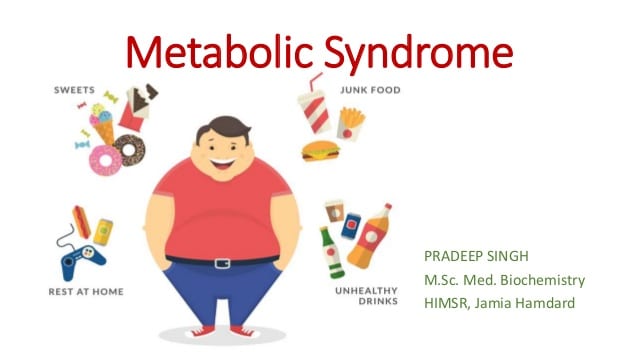Contents
- A bit of history
- Weight
- Increased levels of “bad” cholesterol and lowering levels of “good”
- High blood pressure
- The increase of sugar level in the blood
- Metabolic syndrome brings disease
- How to protect yourself from metabolic syndrome?
- The most important
- Moore about metabolic syndrome you may learn from the video below:
Currently, the term “metabolic syndrome” is often found in the news and the speeches of the doctors.
Despite the fact that people often say about its epidemic, metabolic syndrome is not a disease but the name of a group of risk factors that lead to the development of heart disease, diabetes and stroke.
The main reason for the development of this syndrome – unhealthy lifestyle: excess food, rich in fats and sugar, and sedentary lifestyle.
A bit of history
The relationship between certain metabolic disorders and cardiovascular diseases were established in 1940-ies.
Forty years later scientists were able to identify the most dangerous factors that lead to cardiovascular disease and diabetes.
They were given the General title of metabolic syndrome.
Currently, this syndrome is widespread among the population of developed countries as widely as seasonal flu, and is considered one of the most urgent problems of modern medicine.
Researchers think that metabolic syndrome soon will become the main reason for the development of cardiovascular diseases ahead of the Smoking.
To date, experts have identified a number of factors related to metabolic syndrome.
A person may manifest any of them, but usually they occur together.
Weight
Especially dangerous is the increase of waist size. Body fat on the waist is called abdominal obesity or obesity-type “Apple.”
Excess fat in the abdomen is considered more important risk factor for developing heart disease than deposits in other parts of the body such as the hips.
Attention! Waist circumference more than 102 cm in men and over 88 cm in women, a sign of metabolic syndrome.
Increased levels of “bad” cholesterol and lowering levels of “good”

High-density lipoproteins (HDL) or “good” cholesterol, help remove vessels from the “bad” cholesterol – low density lipoproteins (LDL), forming atherosclerotic plaque.
If “good” cholesterol is not enough, and too much LDL, the risk of developing cardiovascular disease increases.
Attention! Features of the metabolic syndrome:
- the level of HDL in the blood – below 50 mg/DL
- the level of LDL in the blood – more than 160 mg/DL
- the content of triglycerides in the blood is 150 mg/DL and above.
High blood pressure
Blood pressure is the force with which blood presses against the walls of the arteries. If it rises and stays high over time, this leads to a disruption of the heart and blood vessels and risk of stroke.
Attention! Blood pressure 140/90 and above is a sign of metabolic syndrome development.
The increase of sugar level in the blood
High blood sugar fasting suggests that developing insulinrezistentnost – decreased sensitivity of tissues to insulin, which helps cells to absorb glucose.
Attention! The blood glucose level of 110 mg/DL and above indicates the development of metabolic syndrome.
To determine the presence of these risk factors is possible by means of standard tests. They can be held in health Centers.
Metabolic syndrome brings disease
If the at least three factors are present then we can confidently talk about the development of the metabolic syndrome. But one factor is a serious health threat.
According to statistics, a person with metabolic syndrome is twice likely to develop heart disease and five times more likely to develop diabetes.
If there are signs of metabolic syndrome, then we can talk about additional risk factors, like Smoking. In this case your chance of developing heart disease increases even more.
How to protect yourself from metabolic syndrome?

- Refrain from excessive amounts of fat in the diet. Nutritionists recommend getting from fat no more than 400 calories per day. Eight teaspoons, or about 40 g.
- Consume less sugar. Per day is sufficient only 150 calories from sugar. This is about six teaspoons. Don’t forget that “hidden” sugar is also considered.
- Eat more vegetables and fruits. A day should eat about 500 grams of vegetables.
- Maintain body weight within normal range. The body mass index in the range of 18.5 to 25 means your weight is healthy.
- Move more. The day should be not less than 10 thousand steps.
The most important
Poor diet and a sedentary lifestyle leads to the appearance of factors that increase the risk of developing diabetes and diseases of the cardiovascular system. The development of metabolic syndrome can be stopped by changing the lifestyle.










